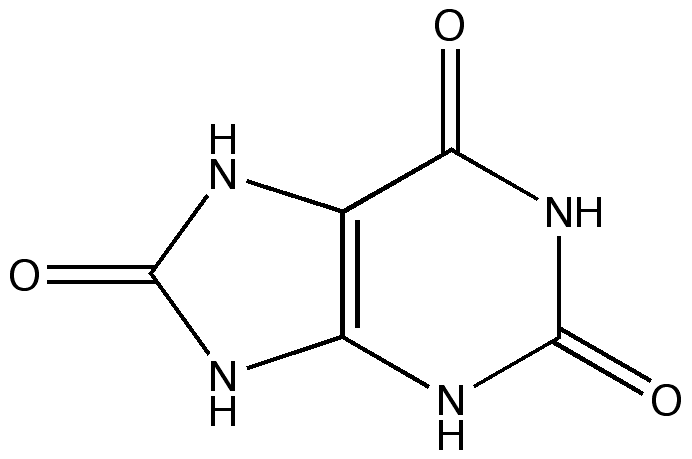All animals need a way to remove wastes from their bodies. For humans, both the liver and kidney participate in breakdown and excretion of metabolic and waste products. The most common waste products in animals are urea, ammonia and uric acid. Ammonia is toxic to all vertebrates. Urea is less toxic. Converting ammonia to urea is an expensive energy move. Some interesting terms:

Among fish, there are large differences within marine fishes as well as compared to freshwater. It is interesting to look at some differences.
Freshwater
FW fishes live in a low salt (hypotonic) environment. Water is constantly moving into their body and the fish must excrete the excess. Blood is pumped by the heart to the kidneys where the blood is filtrated. Excess water and toxins are excreted and necessary electrolytes are reabsorbed. The major component of urine in FW fish is water. Ammonia (NH3) is excreted by the gills. Urea, excreted by humans, takes much more energy to convert to. As expected, there are always exceptions to the rule, such as the coelocanth or African lungfish.

Saltwater
Saltwater fish live in a high salt environment (hypertonic). Therefore, freshwater is always trying to leave their system risking dehydration. This is just the opposite of their freshwater colleagues. Within marine fishes, there are differences between two large groups.
Chondrichthyes, Cartilaginous Fishes
This group, including sharks, rays and skates, produce much more urea than other marine fishes. The concentration of urea is so high that their blood contains almost 300% more making it virtually similar to seawater (isotonic). Shark kidney excretion is very similar function-wise to humans except that they absorb much more urea than we do to keep this balance. In fact, sharks' blood becomes higher osmotically than seawater so that they actually absorb water from the ocean avoiding dehydration.
Osteichthyes, Boney Fishes
These include most of the marine fishes that we keep in our aquariums. These fish do what humans can't do if lost at sea: they contantly drink sea water to replace the freshwater that is continually lost. However, boney fishes have 'desalinators', i.e., they are constantly using energy (ATP) to return salt to the water via the gills using 'active tranport' (remember that from bio?).
Of note, since these fish are constantly in danger of dehydration, there is no need for the kidney to filter large amounts of fluid/liquid and risk losing water. Their kidneys have adapted by making smaller or even no glomeruli, the smallest unit of filtration in the kidneys. Tubular secretion is preferred. This is complicated, so breaking it down, look at two methods of excretion:

Hence, one can see why nitrates are more toxic to marine fish than they are to freshwater.
For those interested in more depth and science, I recommend the following article. Have fun.
Excretion in fish
SH
- osmoconformers: live in an environment isotonic to their bodies and don't need to regulate (eg, SW fish)
- osmoregulators: animals that typically are hypertonic to their environment alter their internal ions (eg, FW fish)
- stenohaline: animals that live in a very narrow range of salinity
- euryhaline: animals that are tolerant to a wide range of osmotic swings

Among fish, there are large differences within marine fishes as well as compared to freshwater. It is interesting to look at some differences.
Freshwater
FW fishes live in a low salt (hypotonic) environment. Water is constantly moving into their body and the fish must excrete the excess. Blood is pumped by the heart to the kidneys where the blood is filtrated. Excess water and toxins are excreted and necessary electrolytes are reabsorbed. The major component of urine in FW fish is water. Ammonia (NH3) is excreted by the gills. Urea, excreted by humans, takes much more energy to convert to. As expected, there are always exceptions to the rule, such as the coelocanth or African lungfish.

Saltwater
Saltwater fish live in a high salt environment (hypertonic). Therefore, freshwater is always trying to leave their system risking dehydration. This is just the opposite of their freshwater colleagues. Within marine fishes, there are differences between two large groups.
Chondrichthyes, Cartilaginous Fishes
This group, including sharks, rays and skates, produce much more urea than other marine fishes. The concentration of urea is so high that their blood contains almost 300% more making it virtually similar to seawater (isotonic). Shark kidney excretion is very similar function-wise to humans except that they absorb much more urea than we do to keep this balance. In fact, sharks' blood becomes higher osmotically than seawater so that they actually absorb water from the ocean avoiding dehydration.
Osteichthyes, Boney Fishes
These include most of the marine fishes that we keep in our aquariums. These fish do what humans can't do if lost at sea: they contantly drink sea water to replace the freshwater that is continually lost. However, boney fishes have 'desalinators', i.e., they are constantly using energy (ATP) to return salt to the water via the gills using 'active tranport' (remember that from bio?).
Of note, since these fish are constantly in danger of dehydration, there is no need for the kidney to filter large amounts of fluid/liquid and risk losing water. Their kidneys have adapted by making smaller or even no glomeruli, the smallest unit of filtration in the kidneys. Tubular secretion is preferred. This is complicated, so breaking it down, look at two methods of excretion:
- filtration-reabsorptioin: fluid is filtrated out and then what is desired is reabsorbed. This risks water loss so osteichthyes have very small or no glomeruli.
- tubular secretion: excellent blood flow via the renal portal vein passes thru the kidney and unwanted wastes are excreted out. Avoids filtration and losses of water.

Hence, one can see why nitrates are more toxic to marine fish than they are to freshwater.
For those interested in more depth and science, I recommend the following article. Have fun.
Excretion in fish
SH




